Einleitung
Verwende diese Anleitung, um die normalerweise am Lautsprechergehäuse befestigte Mobilfunkantenne zu ersetzen.
Werkzeuge
Ersatzteile
-
-
Schalte dein iPhone aus, bevor du es auseinander baust.
-
Deine iPhone 4 Rückabdeckung ist entweder mit zwei Kreuzschlitzschrauben #000 oder Pentalobeschrauben von Apple (zweites Bild) befestigt. Schaue nach, um welche Schrauben es sich handelt, um sicher zu gehen, dass du den richtigen Schraubendreher zum Lösen hast.
-
Entferne die beiden 3,6 mm Pentalobe oder Kreuzschlitzschrauben #000 neben dem Dock Anschluss.
-
-
-
Entferne die einzelne 2,5 mm Kreuzschlitzschraube, mit der der Akkustecker am Logic Board befestigt ist.
-
-
-
Heble mit einem Plastic Opening Tool den Akkustecker aus seiner Buchse auf dem Logic Board.
-
Entferne den Metall-Clip, die den Antennenstecker bedeckt.
-
-
-
Verwende die durchsichtige Kunststofflasche, um vorsichtig den Akku aus dem iPhone zu heben.
-
Wenn sich noch Reste vom Alkohol im Smartphone befinden, dann wische sie sorgfältig weg oder lasse das Gehäuse gut austrocknen, bevor du den neuen Akku einbaust.
-
Bevor du den Akkustecker wieder anschließt, stelle sicher, dass der Kontaktclip (in rot) korrekt neben dem Akkustecker positioniert ist.
-
-
-
Entferne die folgenden zwei Schrauben:
-
Eine 1,2 mm Kreuzschlitzschraube
-
Eine 1,6 mm Kreuzschlitzschraube
-
Entferne die dünne Stahlabdeckung des Dock Kabelverbinders.
-
-
-
Löse den Dock Kabelverbinder vorsichtig mit einem Plastiköffnungswerkzeug vom Logic Board, und zwar an den beiden kurzen Enden des Verbinders.
-
-
-
Löse das Dock Flachbandkabel vorsichtig vom Logic Board un vom unteren Lautsprechergehäuse.
-
-
-
Benutze ein Plastiköffnungswerkzeug, um den unteren Antennenverbinder aus seinem Sockel auf dem Logic Board zu hebeln.
-
-
-
Entferne folgende Schrauben, die das Lautsprechergehäuse am äußeren Gehäuse befestigen:
-
Eine 1,9 mm Kreuzschlitzschraube
-
Eine 2,4 mm Kreuzschlitzschraube
-
-
-
Hebe die Lautsprechergehäuse Einheit mit einem Plastiköffnungswerkzeug aus dem Gehäuse, achte dabei darauf, die EMI Stifte auf der daran befestigen Wi-Fi Antenne nicht zu beschädigen.
-
Entferne die Lautsprechergehäuse Einheit.
-
-
-
Entferne die zwei Kreuzschlitzschrauben, mit denen die Antenne am Lautsprechergehäuse befestigt ist.
-
-
-
Benutze ein Plastiköffnungswerkzeug, um die Antenne vom Lautsprechergehäuse abzulösen, fange dazu in der Nähe des Kabels der Mobilfunkantenne an. Achte darauf, dass du das Werkzeug unter das Plastik, auf das die Antenne montiert ist, schiebst, und nicht unter die Metallplatte.
-
Löse weiter die Antenne ab, und passe auf, dass die goldene Halterung, die an einer Kante befestigt ist, nich abgerissen wird.
-
Entferne die Mobilfunkantenne.
-
Folge diese Anweisungen in umgekehrter Reihenfolge, um das Gerät wieder zusammenzusetzen.
12 Kommentare
That's not a WIFI antenna. The part that you guys are showing is the Cell Phone Antenna.
Matt -
Dose the way you put the screws back on have anything to do with nerwork connection failure?..
I resently replaced my screen and after the replacment my phobe was not connecting to the data network. So i am wondering if it might have anything to do with the screws?..
This is the GSM Antenna not the WIFI as indicated in the tutorial.
The WIFI and GPS antenna is at the top of the iPhone near the cameras.
FYI if anyone has weak wifi and GPS signal then a small metal tab has come off the EMI shield in the top most hole with the 5 screws, I had a problem with weak WIFI after changing the screen and the found that this was the cause, the little tab had come off the EMI shield when I had removed it.
Do you know where to buy the replacement emf shields? I know that a metal tab broke off of the shield but I didn't pay too much much attention to it. Now I suffer with horrible wifi signal.
My phone has the same issues with no signal. Did a replacement emf shield work?
Merc -
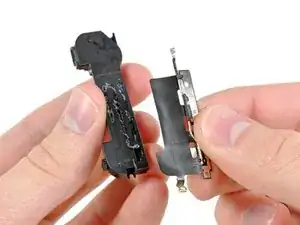
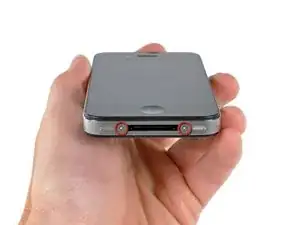
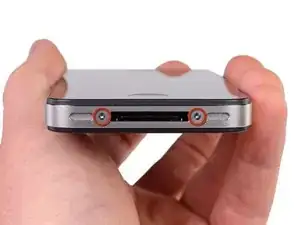
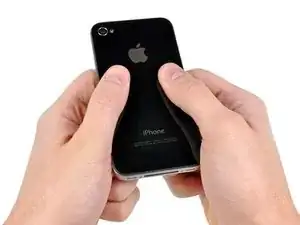
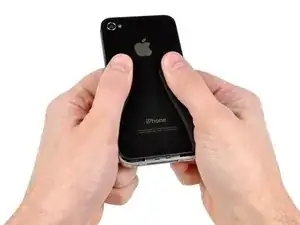
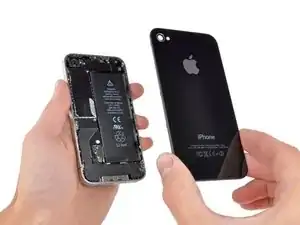
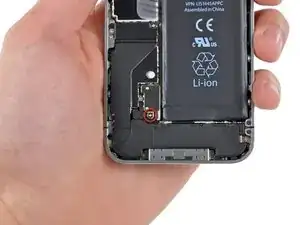
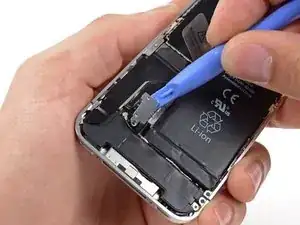
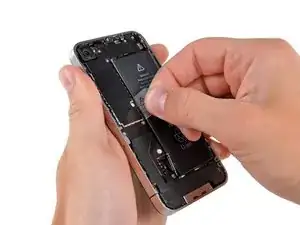
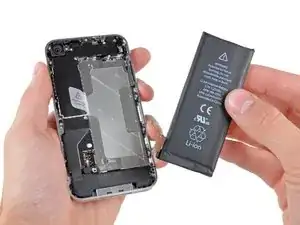
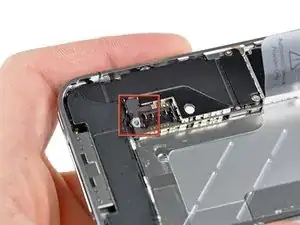
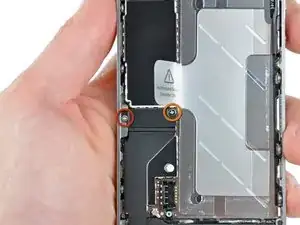
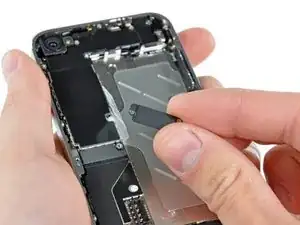
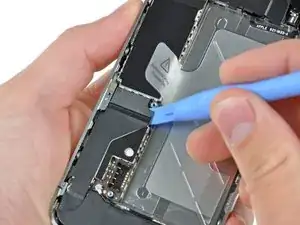
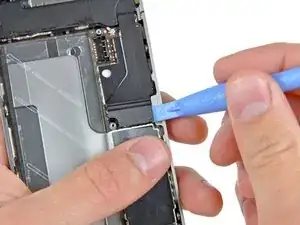
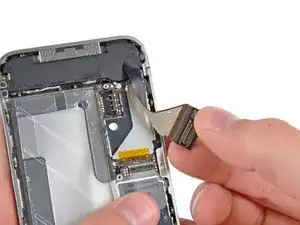
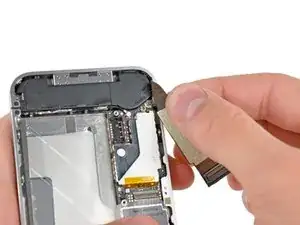
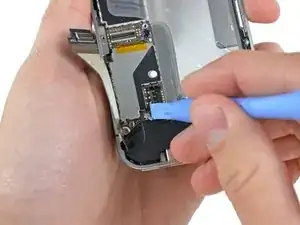
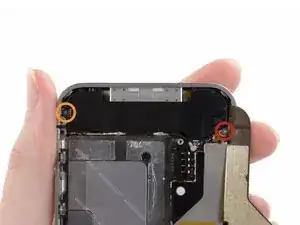
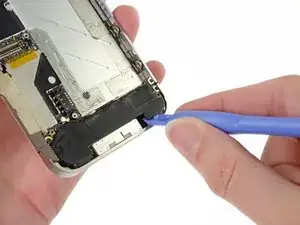
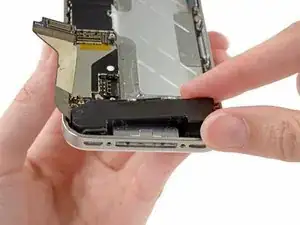
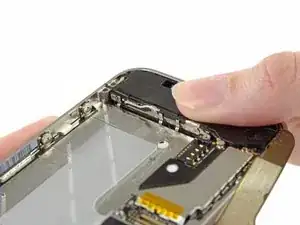
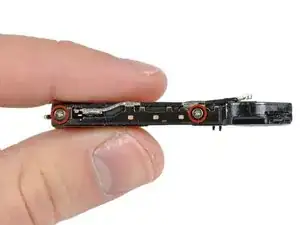
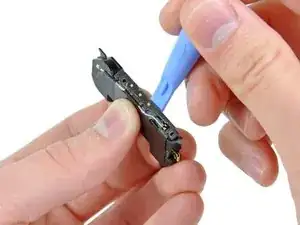
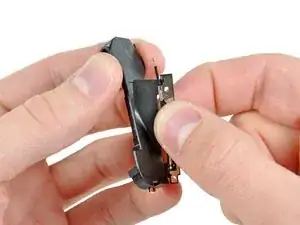
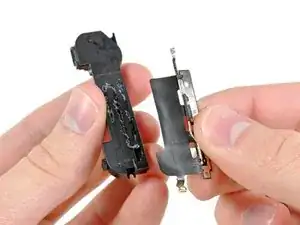

using something like the 18-compartment tray will GREATLY help with this one; there are over a dozen groups of parts. For re-assembly having a digital calipers to measure the 2.4 vs the 2.6mm screws also helps greatly.
awr -
My method for hardware management during delicate phone surgery is to take and print out on 8.5"x11' paper, one or more pictures of the open phone in various stages of disassembly, and then tape the screws to the appropriate spots on the pictures. Also write numbers on the pictures next the screws to indicate the order in which you removed them.
lens42 -
I use a plastic egg tray, I drop all the screws and small parts (like the camera) for each step into the same egg indentation. You can see that the screws are different lengths, so I don't put one screw into it's own spot. I used 5 egg indentations to replace my screen.
robin -
I did a successful surgery on my iPhone, be warned this is not for the faint of heart!
I've done iPod screen replacements, battery replacements, this is by far much more difficult and intricate.
Great write up! Thanks a million.
Jaysen Strange -
I've changed some iPod screens as well and that has been the least pleasant experience so far. Glue and the main connector that has to be unwrapped and connected from the rear where you have no feel or control where it belongs.
iPhone repair is complex, but doable and has very few "traps".
mcbohdo -
Couldn't even get both screws out of the bottom of the case. One was easy and other refuses to budge. Screws so small I can't see if it is turning or screw driver is properly seated. Sad I too have done screen replacements on other phones. Don't know any secrets to get the screw out
ckracht -
I also have a problem with seeing what is happening with some of those tiny little screws and parts. For other projects that I do, I use an Opti-Visor. It slips over your head and provides 10x magnification. ( You can find them on Amazon).
Yeah, it adds cost to the project and you would have to wait for delivery, but it sure makes a world of difference in seeing what you are working with / on.
jhow -
On an early iPhone 4 I found that the #000 Phillips bit included in the 54 Bit Driver Kit didn't actually fit the screws. However the JIS #000 also in the kit did fit quite well. This is due to the JIS bits "thinner" design to prevent camming out of the slot. Otherwise everything went well. Looking forward to replacing the battery in my other phone that has the pentalobe screws. Glad I got the 54 Bit kit!
etler -
Use a vacuum duster and a sharp tool to pry out the dust, this can increase the volume insanely!
Dpairs -
What does the park that is gold and next to the 4.8mm screw for the antenna? Looks like I am missing that part and almost positive that is why I can't pick up or connect to any wifi signals. I have the screw and the antenna from another phone that is working and tried it on the broken phone and still doesn't work. Only thing different is that gold metal piece to the left of that 4.8 mm screw. Can I buy that part? how do I attach it?
Jay Pennington -
great instructions did it the first time
Mr J -
For organisation of the parts and for a much easier process of rebuilding i use a big magnetic flat surface with a grid drawn on it. Then I use a dry erase marker to make any notes I need and to number the parts in order as i disassemble . Believe me it saves a lot of time and hassle especially if you drop one of those tiny screws good luck finding it but when your working over the magnet and drop a screw its going to be right where it fell. At first I tried the piece of paper to keep organised but all it takes is one small slip and you move the paper too quick and your left with a jumbled bunch of screws and parts and a painstaking task of putting it all back correctly, aka a big waist of time and effort.
case-yg -
I found it very useful to use a magnet sheet when doing these repairs. I use electrical tape or a sharpie to make a grid, and place each micro screw in a separate box on the grid.
I work directly over the magnet sheet, so that if something drops I have a better chance at not losing it.
If you do lose a screw, go over the work area with a fridge magnet. It will pick it up if it hasn’t popped too far away.
Megan Telliano -